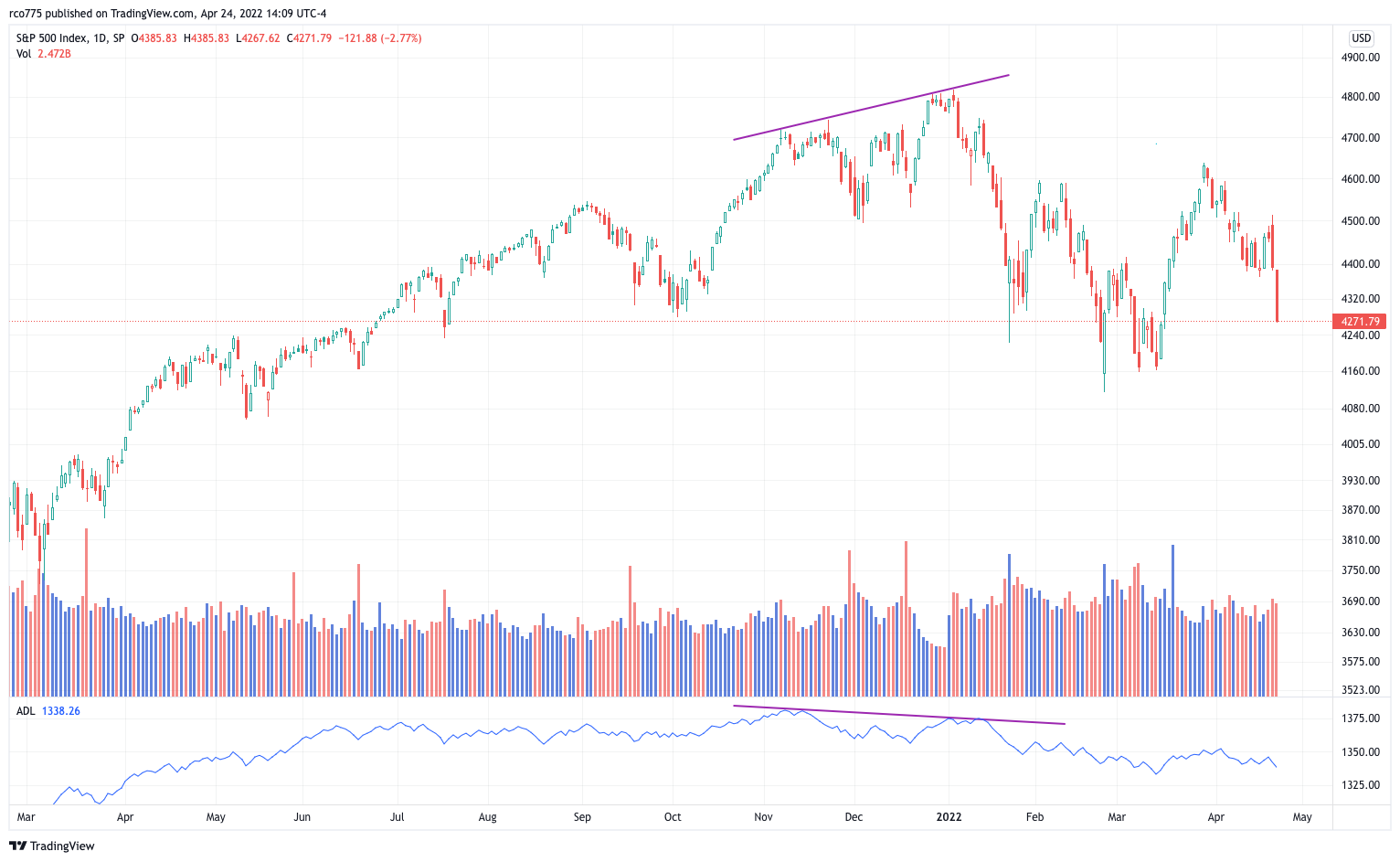Save the Free Press: Receive a Free Financial Gift
MARKET Watch
by Romulus at Backpack TraderTechnical analysis is the study of financial markets using price and volume information. To simplify, we look at the past in order to understand the future.
The market is always changing what it is fascinated or concerned about. It was inflation in the late 1970’s, tax cuts in the 80’s, dot-com dreams in the 90’s, mortgage problems in the 00’s, technology growth in the teens and here we are back to inflation. Interest rates have exploded over the last six months and that is now putting a lot of pressure on the technology stocks.
As big money continues to rotate out of growth and into safer areas such as utility and energy groups, it is probably a good time to go back and see what happened the last time a rotation like this took place.
Grow Wealth, Not Risk. Trade alongside a 27 year hedge fund veteran
I do not believe the covid crash two years ago was a bear market. My standard to qualify for a bear market incorporates price and time. Covid crash lasted only a month, and the major indexes hit new all-time highs within a few months.
The last bear market was the financial crisis that ended in March of 2009. It has been that long. A new bear seems to be upon us, however, and there are echos of the market top in October of 2007 sounding through the canyons of Wall Street today.
The advance decline line peaked in the summer of 2007, roughly three months before the final high for the S&P 500, which occurred on October 14th. Now, the advance decline line peaked two months prior to the final high in the S&P.

Just like today, in 2007 the big money players were moving into the traditional safety sectors like utilities, energy, consumer staples and health care. In the past few weeks, a lot of retail traders around the world were crowding into these trades, believing they will bring them back to the returns they were seeing two years ago. What they may not realize, though, is that the party abruptly ended for those safety moves back then, and this will happen again, as well.
Club Romulus: Where knowledge plus action equals profitThe utility sector was the first to leave, as it maintained its rally for another seven weeks after the rest of the market peaked. Health care was next, moving up until January, before joining the growing bear field. Energy stocks kept pushing higher through May, before starting a wicked 60% smash that lasted almost 10 months. Consumer staples was the last to go, holding it together until September of 2008. But even the food stocks eventually succumbed to the selling, dropping 33% in six months.
Short term trades aside, the lesson here is that there isn’t anywhere to hide in a bear market.
Remember:
Wealth, like Rome, cannot be built in a day. But, like Rome, it can be lost in a day. Watch for future announcements from Romulus about profitable market moves, important indicators, and major market swings. For trading education, mentoring, or to beat the markets with Romulus' trading group, contact romulusteaches@yahoo.com.
About the author: In his real-life existence, Romulus started on Wall Street in 1994 and traded for a hedge fund for 13 years. Since 1994, he has called every major market top ahead of time and profited from them, including the break of the Dot-com bubble in 2000, the market crashes of 2008 and 2009, and the Covid crash of 2020. Since 2020 he has been working with investors and traders to actively manage their portfolios by growing wealth, not risk, as a teacher and mentor working with Backpack Trader, a stock trading educational company.
Free Press International


